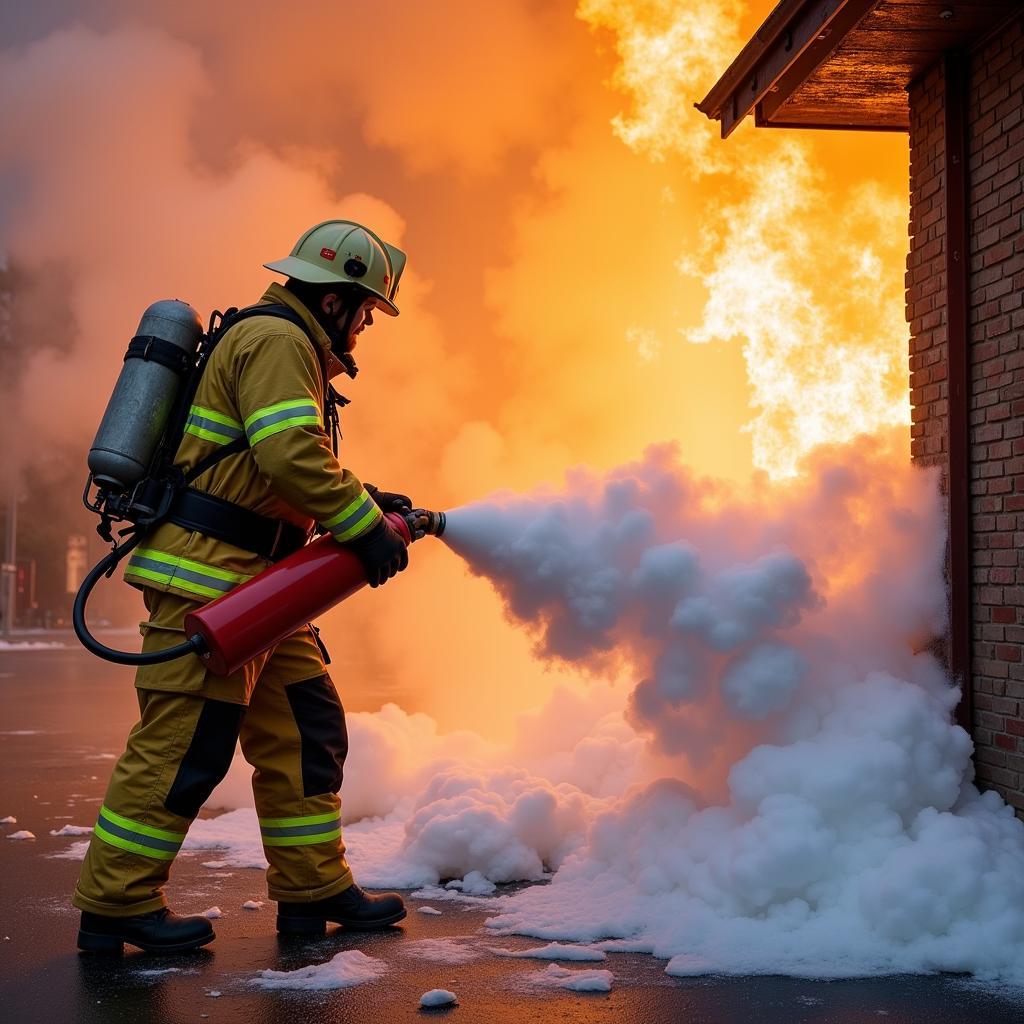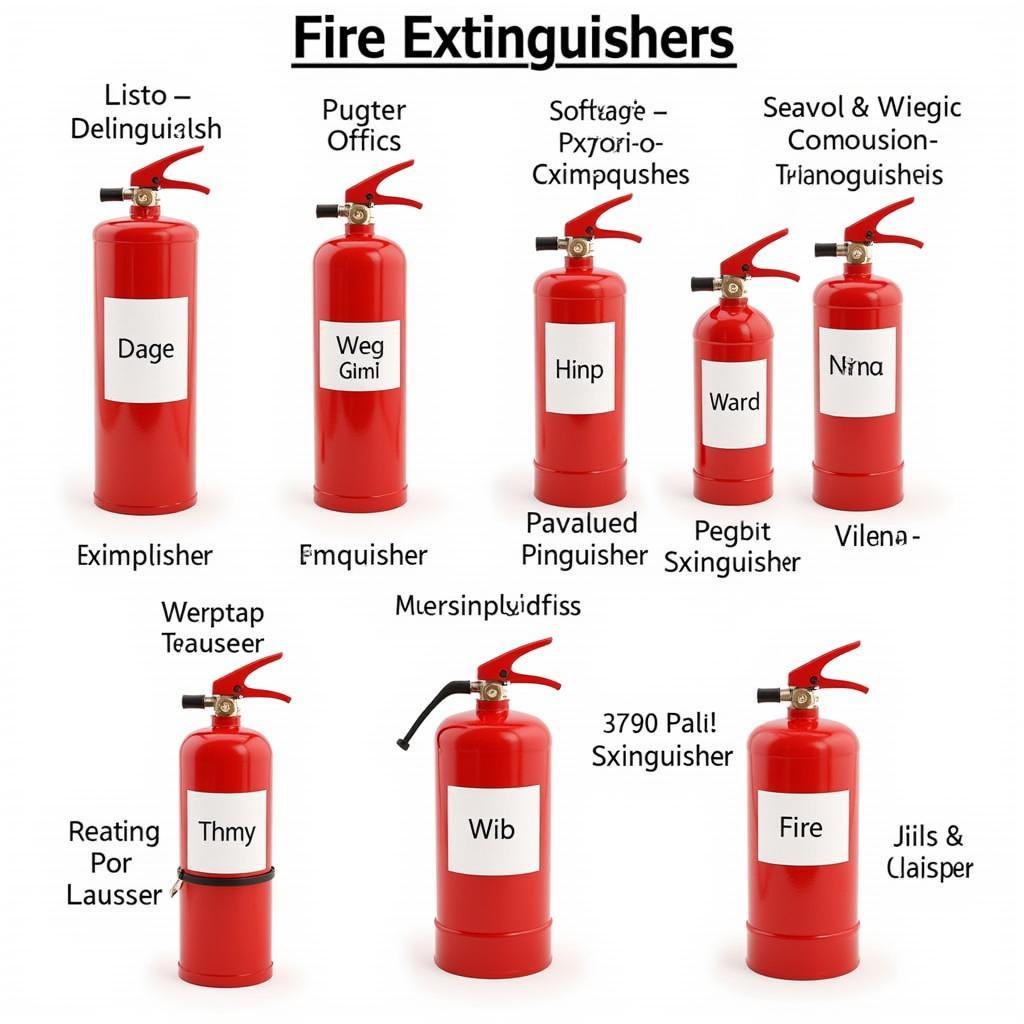Extinguishes a Fire or a Light: Understanding the Nuances
November 10, 2024Extinguishing a fire or a light involves stopping a combustion process, but the methods and implications differ significantly. Whether you’re dealing with a small candle flame or a raging wildfire, understanding the principles of extinguishment is crucial for safety and effectiveness. This article explores the various ways we extinguish fires and lights, delving into the science behind each method and highlighting the importance of choosing the right approach for different situations.
Different Ways to Extinguish a Fire or a Light
Extinguishing a fire or a light can be achieved through various methods, each relying on disrupting one or more elements of the fire triangle: heat, fuel, and oxygen. Let’s examine some common techniques:
Smothering the Flames
Smothering involves cutting off the oxygen supply to the fire or light. This can be done by covering the flame with a lid, a fire blanket, or even dirt or sand. For small fires, a simple glass or metal lid can effectively extinguish the flames by preventing oxygen from reaching the burning material. Larger fires, however, require more substantial smothering agents like fire blankets or specialized foams.
 Smothering a Kitchen Fire with a Lid
Smothering a Kitchen Fire with a Lid
Cooling the Heat Source
Another effective method is cooling the burning material below its ignition temperature. Water is the most common cooling agent, especially for Class A fires involving ordinary combustibles like wood and paper. The water absorbs the heat, lowering the temperature and effectively stopping the combustion process. However, water should never be used on grease fires or electrical fires, as it can exacerbate the situation.
Removing the Fuel Source
Sometimes, the best way to extinguish a fire is to remove the fuel source. This is particularly relevant in controlled burns or wildfires, where firefighters might create firebreaks to prevent the fire from spreading to new fuel sources. In a smaller scale, removing a burning log from a fireplace effectively extinguishes the fire in that specific location.
Extinguishing Different Types of Fires
Different types of fires require different extinguishing methods. Using the wrong method can be dangerous and even make the fire worse.
Class A Fires: Ordinary Combustibles
These fires involve everyday materials like wood, paper, cloth, and trash. Water is the most effective extinguishing agent for Class A fires.
Class B Fires: Flammable Liquids
These fires involve flammable liquids like gasoline, oil, and grease. Smothering agents like dry chemical extinguishers, foam, or carbon dioxide are effective in extinguishing Class B fires.
 Extinguishing a Class B Fire with Foam
Extinguishing a Class B Fire with Foam
Class C Fires: Electrical Fires
These fires involve energized electrical equipment. Non-conductive extinguishing agents like dry chemical extinguishers or carbon dioxide are essential for Class C fires. Never use water on electrical fires.
Class K Fires: Kitchen Fires
These fires involve cooking oils and fats. Wet chemical extinguishers are specifically designed for Class K fires, as they create a soapy layer that smothers the flames and prevents re-ignition.
Yamal: A Fiery Spirit on the Field
Just like knowing how to extinguish a fire requires understanding its nature, appreciating Yamal’s brilliance requires understanding his unique approach to the game. His fiery spirit and determination are evident in every match, and he possesses the skill to “extinguish” any opposing defense. He truly embodies the spirit of a champion, consistently pushing his limits and inspiring others to do the same.
Conclusion
Extinguishing a fire or a light, whether a small flame or a large blaze, requires understanding the underlying principles of combustion and choosing the appropriate extinguishing method. By considering the type of fire and the available resources, you can effectively and safely extinguish fires, protecting yourself and your surroundings. Just like Yamal strategically navigates the field, understanding the nuances of extinguishment is key to success.
FAQs
- What is the fire triangle?
- What are the different classes of fires?
- Can I use water on a grease fire?
- What type of extinguisher should I have in my home?
- What should I do if a fire extinguisher doesn’t work?
- How can I prevent fires in my home?
- What is the best way to extinguish a candle?
 Different Types of Fire Extinguishers
Different Types of Fire Extinguishers
Other articles on our website:
- Yamal’s Journey to Success
- Yamal’s Training Regimen
- Yamal’s Impact on the Community
When you need assistance, please contact us: Phone: 0915117113, Email: [email protected] Or visit us at: Hamlet 3, Binh An, Phu Thuong, Binh Phuoc 830000, Vietnam. We have a 24/7 customer service team.